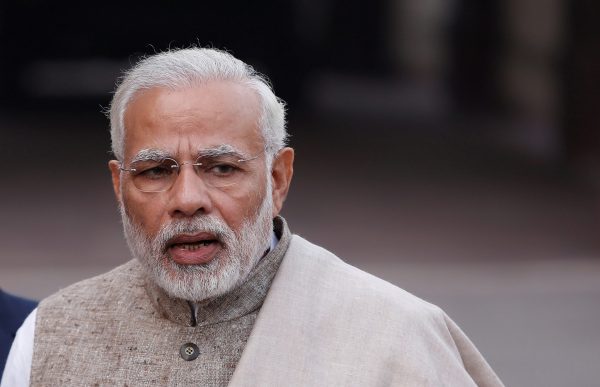For many Asian developing economies, such growth would nonetheless be considered unremarkable — especially at a time when the world economy is doing well. To understand the government’s ecstatic reaction, some political background is essential.
In May 2017, the Modi government completed three years of its five-year parliamentary term. In 2014, the Bharatiya Janata Party (BJP) — Modi’s political party — won an absolute majority in India’s lower house. Modi campaigned as then chief minister of Gujarat: a prosperous, medium-sized state. The strength of his mandate also reflected disillusionment with the outgoing Congress-led government of Manmohan Singh.
Unencumbered by the constraints of running a coalition government, Modi was expected to restore dynamism to an economy which had ‘run out of steam’, particularly in the vital area of private corporate investment. To the surprise of many observers, Modi (and his finance minister Arun Jaitley) made few radical moves in the honeymoon period during the government’s first year.
Instead, Modi devoted much of his considerable energy to international diplomacy and relatively safe initiatives such as the National Sanitation Campaign and the recasting of India’s Planning Commission into the think tank NITI Aayog. Raghuram Rajan, the respected governor of the Reserve Bank of India (RBI) — India’s central bank — was also retained in this period.
Two flagship initiatives of the previous government were strengthened: the biometric identification scheme known as Aadhaar and the National Rural Employment Guarantee scheme, which constitutes a basic safety net for India’s rural poor. A widespread assessment at the end of 2015 was that Modi was reluctant to expend much political capital on economic reform.
The narrative has changed dramatically since the middle of 2016. Rajan decided not to extend his term as governor of the RBI, which was followed by the announcement of an inflation targeting framework (conceived by him) for the RBI and by the appointment of a new seven-person Monetary Policy Committee, including four academics nominated by the government.
Successful negotiations with both houses of the Parliament enabled a constitutional amendment altering taxation power, which made possible the introduction of a national goods and services tax (GST).
But the biggest bombshell came on 8 November 2016. An emotional Modi addressed the nation to say that the Union Cabinet had approved the recommendation of the RBI Board that large-value notes — which amounted to 81 per cent of total paper currency in circulation in India at the time — would no longer be accepted as legal tender.
Holders were required to exchange these at banks for newly designed notes within the next three months. Modi presented the move as the most dramatic in a series of measures on the part of his government to address the scourge of deep-seated corruption and tax evasion in India.
In 2017, it is clear that ‘demonetisation’ marked the beginning of a new phase for the Modi government. The implementation of the note exchange was lamentable and showed the RBI in an unusually poor light. It also imposed severe stress and hardship on India’s vast cash-based ‘informal’ economy of small-scale manufacturing, agricultural trade and petty services.
Despite this hardship the evidence is that the fight against ‘black money’ commands enormous political support, as was demonstrated by an important BJP electoral victory in Uttar Pradesh in early 2017, which is India’s most populous state.
Since the Uttar Pradesh victory Modi has been on a roll politically, and succeeded in having his nominees elected to the largely ceremonial but nonetheless symbolic positions of president and vice-president as well as in launching the ambitious GST on 1 July 2017. Led by him, the BJP was victorious in two state elections at the end of 2018, including in his home state of Gujarat.
Everything seems to be going the government’s way except for economic growth, but there is no consensus on why India’s growth has been so disappointing over the past couple of years. As might be expected, the opposition blames the demonetisation caper for the loss of growth momentum, while the fledgling Monetary Policy Committee is seen as keeping interest rates too high.
One important reason for sluggish private investment is likely India’s ‘twin balance sheet’ problem: corporate borrowers cannot repay the banks on loans contracted in the boom years and the banks — whose majority owner is the government — lack capital to extend fresh credit. A deeper cause is uncertainty in big business about its standing with this government.
In the last year and a half, Modi has demonstrated he is willing to be disruptive to signal the need for a profound change in India’s ethical culture. In this crusade, the people are behind him. India’s forthcoming budget on 1 February 2018 will signal whether reform or populism will dominate the final lap of his first term.
Suman Bery is currently a Nonresident Fellow at the Brussels-based think-tank Bruegel as well as a Senior Fellow at the Mastercard Center for Inclusive Growth. He is a former director-general of the National Council of Applied Economic Research, New Delhi.
This article is part of an EAF special feature series on 2017 in review and the year ahead.

